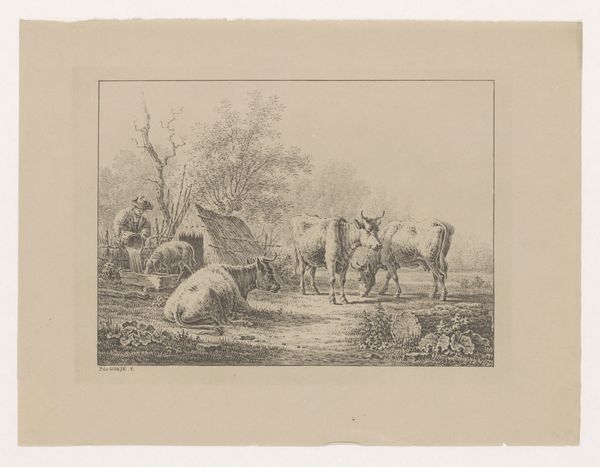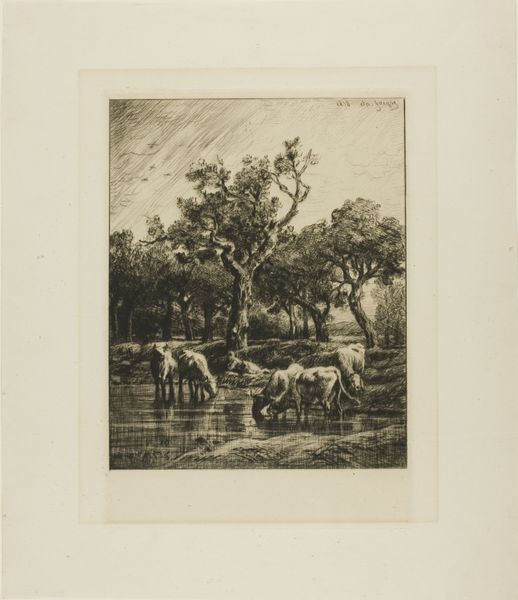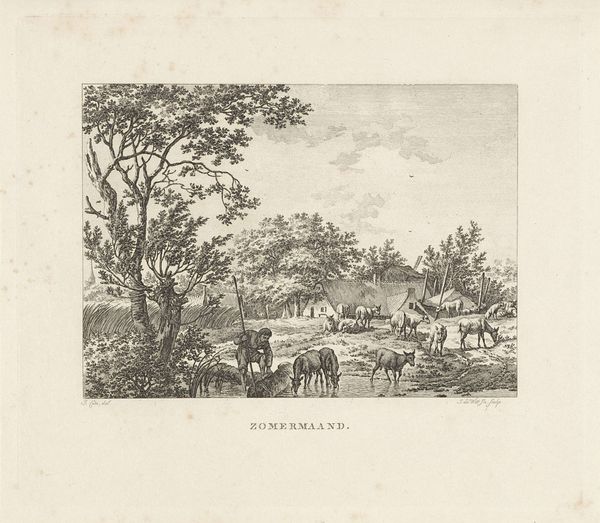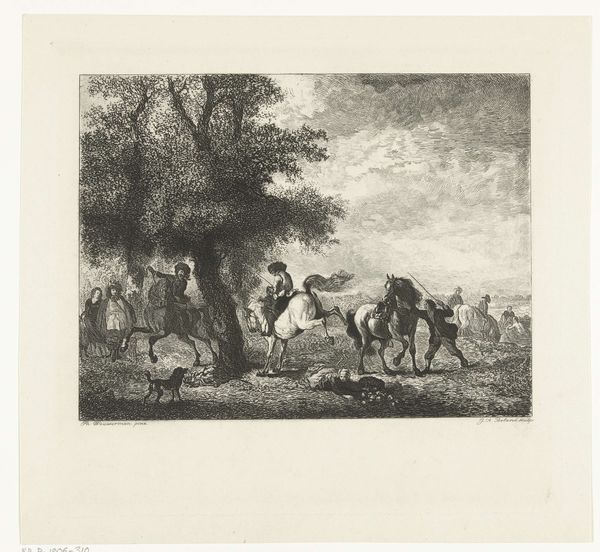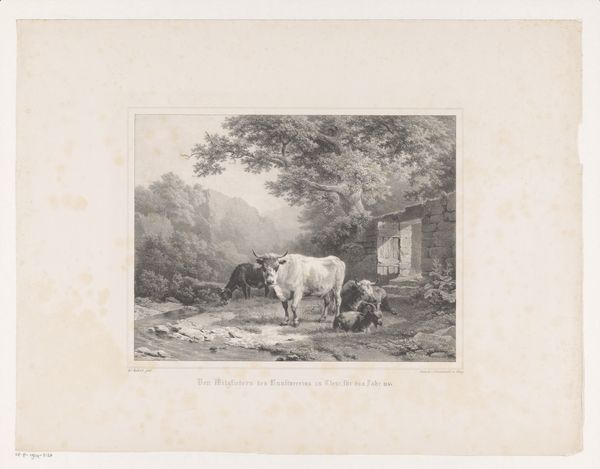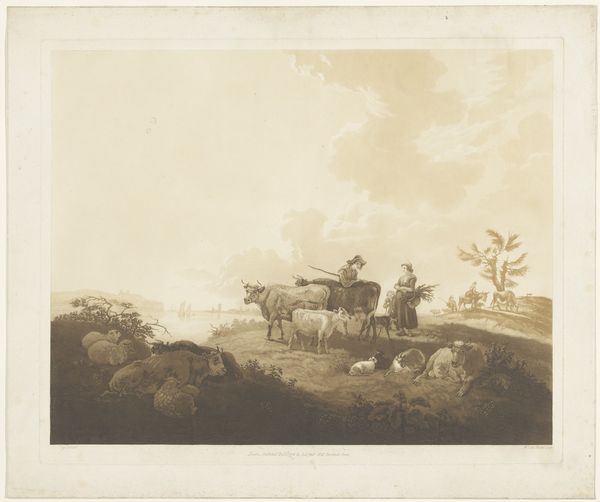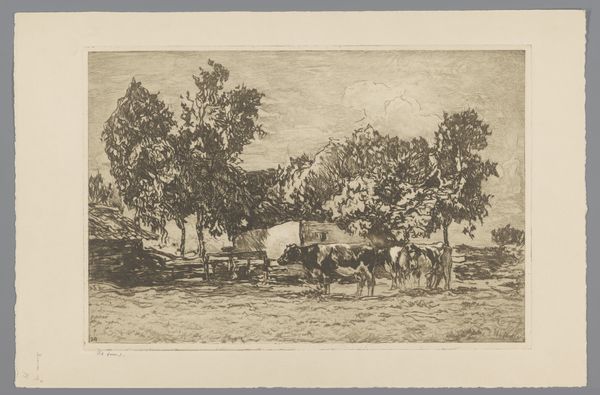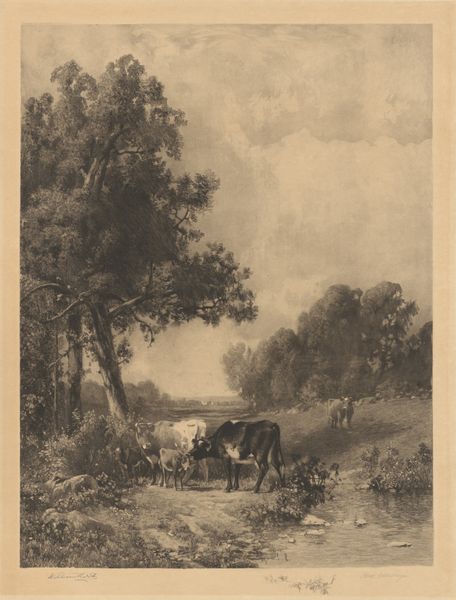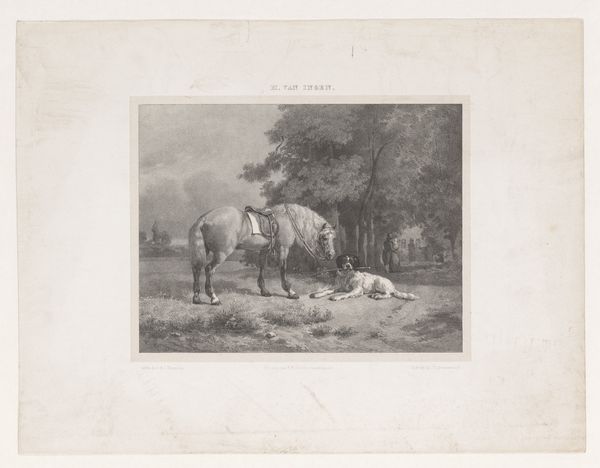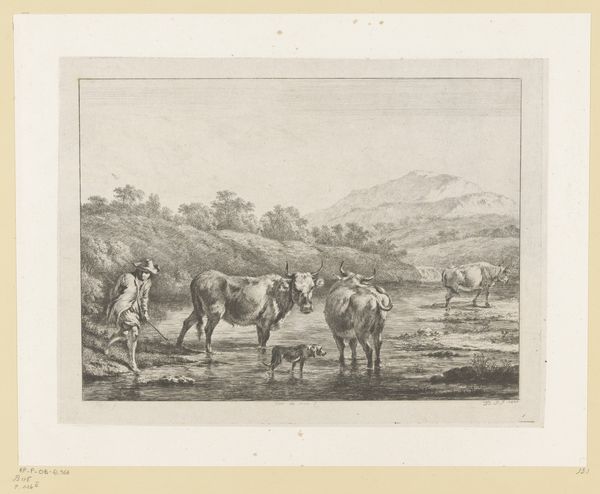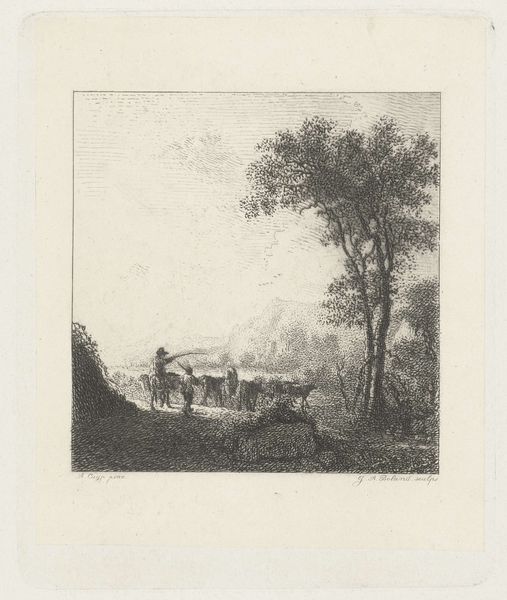
Watermolen bij een boerderij met koeien in een landschap 1873 - 1874
0:00
0:00
charlescourtry
Rijksmuseum
print, etching
#
light pencil work
#
pale colours
# print
#
etching
#
light coloured
#
landscape
#
white palette
#
genre-painting
#
remaining negative space
#
realism
Dimensions: height 361 mm, width 450 mm
Copyright: Rijks Museum: Open Domain
Editor: So, this etching is titled *Watermolen bij een boerderij met koeien in een landschap*, which translates to *Watermill near a Farm with Cows in a Landscape*. It's from 1873-1874 by Charles Courtry and printed on paper. The light pencil work gives the entire piece a serene feel. What are your thoughts when you look at it? Curator: Immediately, I’m struck by the composition. Courtry uses a predominantly horizontal arrangement, which is reinforced by the landscape elements—the land, the building, and the cows. What do you observe about how the light interacts with the forms? Editor: It looks like there's a limited range of tone, from light grays to darker grays. The artist creates depth using those light tones. Curator: Precisely. Notice also the texture created by the etching technique. How does the interplay of lines contribute to your understanding of form and space within the picture plane? Is it merely representational? Editor: I think the lines help distinguish texture of the grass and the shaggy thatch roof. But there are also many patches with blank space in the background to provide a sense of the scale and distance in the picture. Curator: The negative space around and within forms offers a counterbalance, creating a visual rhythm. How does this restraint affect the overall reading of the work, given it is called “Realism?" Editor: Maybe instead of pure visual accuracy, the blank space makes it dream-like? Curator: Perhaps, it is an exercise in extracting essential form and tonal value, a stripping down to fundamentals. The realism emerges through simplified form, presented in a specific manner. What have you learned from looking at the work through this lens? Editor: Now I can see it as less of a depiction of pastoral life and more about how the artist's method shapes our perception. Curator: Yes. Through a formalist lens, we can discover the dialogue between technique and perception that creates the artwork's unique meaning.
Comments
No comments
Be the first to comment and join the conversation on the ultimate creative platform.
